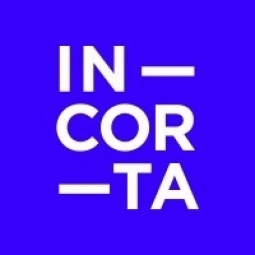Technology Category
- Platform as a Service (PaaS) - Application Development Platforms
Applicable Industries
- Healthcare & Hospitals
Use Cases
- Supply Chain Visibility
- Time Sensitive Networking
About The Customer
Smiths Medical is a global manufacturer of medical devices. The company operates in the manufacturing industry and has a size of 5,001-10,000 employees. The department that was primarily involved in this case study is the Finance department. The company was seeking to improve its bottom line and identify new growth opportunities by gaining more granular visibility into its business systems. However, it was facing challenges with its legacy data pipelines and processes, which were hindering its ability to deliver timely and actionable insights.
The Challenge
Smiths Medical, a global medical device manufacturer, was facing challenges with its legacy data pipelines and processes. The company desired more granular visibility into its business systems to improve its bottom line and identify new growth opportunities. However, the existing data pipelines and processes were not able to deliver timely and actionable insights. The IT team was unable to provide the necessary data-driven insights due to the limitations of the legacy systems. This lack of timely and granular insight was hindering the company's ability to make agile and data-driven decisions.
The Solution
Smiths Medical adopted Incorta's high-powered operational analytics platform to overcome these challenges. Incorta's platform makes data sources analytics-ready, eliminating the need for data transformation, reshaping, and aggregation steps required by other solutions. This significantly reduces the development time for data engineers and architects, and enables analysts, data scientists, and business users to self-service many of their BI needs. With Incorta, Smiths Medical can analyze all usable data with full transactional detail and enjoy unmatched performance even against billions of records. Incorta also enables Smiths Medical to unify business systems and maintain a single source of truth for all users, empowering individual contributors and enabling more productive collaboration among disparate teams.
Operational Impact
Quantitative Benefit

Case Study missing?
Start adding your own!
Register with your work email and create a new case study profile for your business.
Related Case Studies.

Case Study
Hospital Inventory Management
The hospital supply chain team is responsible for ensuring that the right medical supplies are readily available to clinicians when and where needed, and to do so in the most efficient manner possible. However, many of the systems and processes in use at the cancer center for supply chain management were not best suited to support these goals. Barcoding technology, a commonly used method for inventory management of medical supplies, is labor intensive, time consuming, does not provide real-time visibility into inventory levels and can be prone to error. Consequently, the lack of accurate and real-time visibility into inventory levels across multiple supply rooms in multiple hospital facilities creates additional inefficiency in the system causing over-ordering, hoarding, and wasted supplies. Other sources of waste and cost were also identified as candidates for improvement. Existing systems and processes did not provide adequate security for high-cost inventory within the hospital, which was another driver of cost. A lack of visibility into expiration dates for supplies resulted in supplies being wasted due to past expiry dates. Storage of supplies was also a key consideration given the location of the cancer center’s facilities in a dense urban setting, where space is always at a premium. In order to address the challenges outlined above, the hospital sought a solution that would provide real-time inventory information with high levels of accuracy, reduce the level of manual effort required and enable data driven decision making to ensure that the right supplies were readily available to clinicians in the right location at the right time.

Case Study
Gas Pipeline Monitoring System for Hospitals
This system integrator focuses on providing centralized gas pipeline monitoring systems for hospitals. The service they provide makes it possible for hospitals to reduce both maintenance and labor costs. Since hospitals may not have an existing network suitable for this type of system, GPRS communication provides an easy and ready-to-use solution for remote, distributed monitoring systems System Requirements - GPRS communication - Seamless connection with SCADA software - Simple, front-end control capability - Expandable I/O channels - Combine AI, DI, and DO channels

Case Study
Driving Digital Transformations for Vitro Diagnostic Medical Devices
Diagnostic devices play a vital role in helping to improve healthcare delivery. In fact, an estimated 60 percent of the world’s medical decisions are made with support from in vitrodiagnostics (IVD) solutions, such as those provided by Roche Diagnostics, an industry leader. As the demand for medical diagnostic services grows rapidly in hospitals and clinics across China, so does the market for IVD solutions. In addition, the typically high cost of these diagnostic devices means that comprehensive post-sales services are needed. Wanteed to improve three portions of thr IVD:1. Remotely monitor and manage IVD devices as fixed assets.2. Optimizing device availability with predictive maintenance.3. Recommending the best IVD solution for a customer’s needs.

Case Study
HaemoCloud Global Blood Management System
1) Deliver a connected digital product system to protect and increase the differentiated value of Haemonetics blood and plasma solutions. 2) Improve patient outcomes by increasing the efficiency of blood supply flows. 3) Navigate and satisfy a complex web of global regulatory compliance requirements. 4) Reduce costly and labor-intensive maintenance procedures.

Case Study
Cloud-based healthcare solution for Royal Philips
Royal Philips wanted to launch its cloud-based healthcare solution HealthSuite Digital Platform in China to deliver services to help cope with challenges related to urbanization and population growth. Philips wanted to achieve this goal by combining mobile, cloud computing and big data technologies. To bring this platform and product to market, Philips required cloud computing and local technical service capabilities in China, in addition to a flexible IT infrastructure that could handle user requests.








